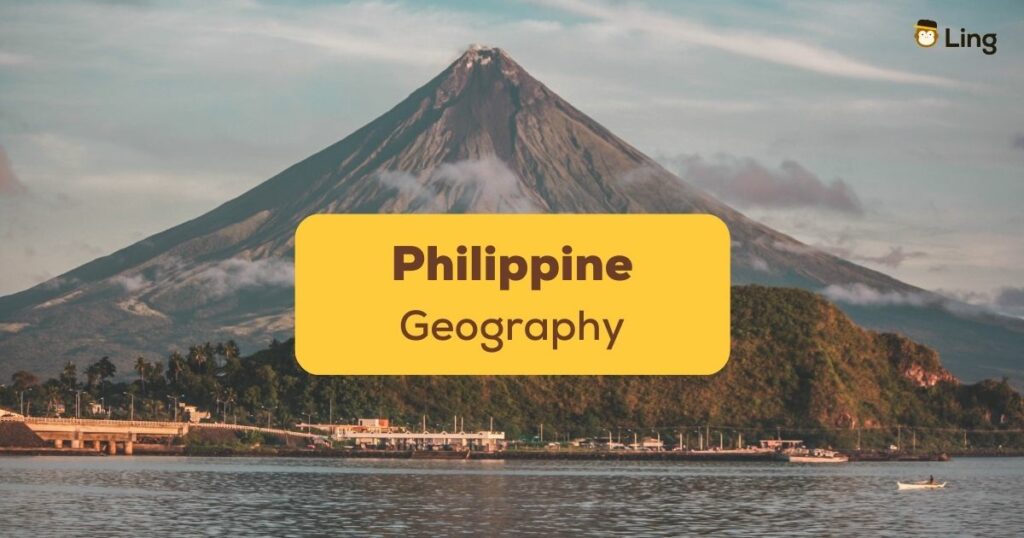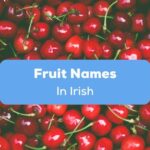For most people in the US, the Philippines is a country in the middle of the sea, where many of their migrant Filipino friends call their home. But, apart from the food, culture, and people, there’s so much more to be said about this chain of over 7,600 islands with a lot to offer regarding its geography!
Today we’re going to talk about Philippine Geography and what the country has to offer to those who want to visit it. Spoiler alert: it’s a beautiful tropical paradise, and you’ll want to book your flight as soon as you finish this article!
Philippine Geography – What You Need To Know
The Philippines In A Nutshell
The official name of the Philippines is the Republic of the Philippines (Republika ng Pilipinas). The name comes from the country’s ear of Spanish rule, taking its namesake from Spain’s King Philip II.
The Philippine flag is a yellow star surrounded by three stars (representing its largest islands) on a bed of white (representing purity), followed by blue and red banners (representing peacetime and wartime.) The flag is flown differently depending on if it is on the warpath or not.
The Philippine government is a democracy, meaning its citizens elect their president. The president will then have a six-year term. After that, they are considered both head of state and commander-in-chief of the country’s armed forces.
Education starts in preschool, usually culminating in a four-year college course as an undergraduate. In commerce, the Philippines uses the peso as its currency. Its main exports are coconuts, fish, mangoes, pork, and industrial products.
As it is an archipelago, the Philippines’ geography is scattered around the sea. The Philippines occupies over eleven islands in the West Philippine Sea, currently contested by several other countries, such as China.
Geography Of The Philippines
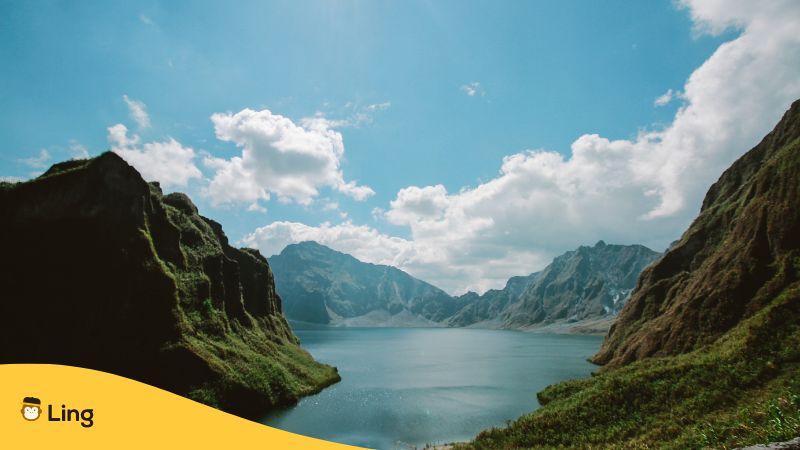
The Philippine landmass is about 115,800 square miles big (or 300,000 square kilometers.) The Philippine archipelago lies in Southeast Asia and is bordered by the West Philippine Sea, the Pacific Ocean, the South China Sea, and more. Its capital city is Manila.
This country can boast rainforests, active volcanoes, mountain ranges, and over 7,600 islands! Filipinos affectionately call their country Perlas ng Silangan (Pearl of the Orient) because of its beautiful tropical climate and islands.
The country’s physical geography is blessed with plenty of natural resources, both land, and sea. Its largest island is Luzon, while the smallest island is Malalison Island in Panay. The country only has two weather seasons: the dry season and the wet season.
The highest point of the Philippines, and also one of its most notable peaks, is Mt. Apo, which stands at 2,956 MASL. Its lowest point is the Galathea Depth, reaching 10,540 MBSL. Napakalalim (very deep!)
The Population Of The Philippines
The Philippines is currently home to over 113 million Filipinos. Many people live in the National Capital Region. Still, plenty of urban centers are scattered across the country: Northern Luzon, Central Luzon, Cebu City, Davao City, Eastern Mindanao, and more!
Filipinos are made up of many racial groups. In addition, there are numerous upland tribal groups and citizens that have lived their whole lives along coastal plains, mountains, and urban centers. In the probinsyas (rural provinces), highways are dotted all around by barrios (villages) where the happiest people in Southeast Asia live.
Official Language Of The Philippines
Of course, it’s not a Ling App article if we don’t talk about the official language of the Philippines! Of course, it’s Tagalog! It is spoken by over 64 million Filipinos. Following suit is Cebuano, the second most spoken language in the country, with over 21.3 million speakers as of 2021.
English is also widely spoken in the Philippines, with most learners getting familiar with it at an early age. However, if you do visit, Filipinos will be even happier if they hear you saying what you want in Tagalog!
It is said that it takes over 1,000 hours to be fluent in Filipino. So if you want your trip to the Philippines to go smoother, start learning Tagalog with the Ling app today! Alternatively, you can check out some of our other articles on Tagalog, such as how to say maganda (beautiful)!
Filipino People
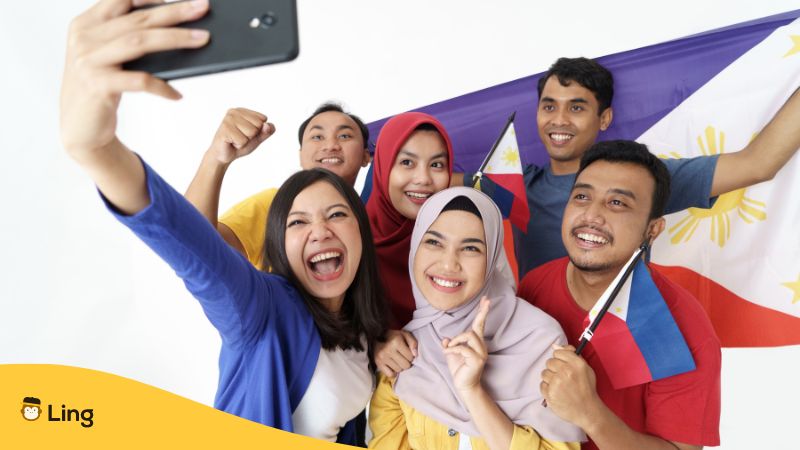
The Philippines is more than Manila Bay sunsets and Boracay beaches – it is home to some of the most interesting people you’d ever meet.
Predominantly, Filipinos are of Malay descent. For a time, the southern Philippines was home to a sizeable Muslim kingdom, the Sulu Sultanate. They ruled over the Sulu archipelago all the way up to Palawan! On the other hand, Northern Luzon was occupied by mountain tribes that had never been conquered by anyone.
When the 19th century rolled in, Filipinos started adopting Spanish names due to a decree by its then-occupier, Spain. This explains how many Pinoys have Spanish last names, such as de la Cruz and de Los Santos!
Today, Filipinos are composed primarily of people of Malay, Spanish, and Chinese descent. But some regions in the Philippines have people of American descent, as the post-war Philippines used to serve US Naval bases. Aetas, people of Austronesian descent, have also carved out their home in the Northeastern portion of the country.
Culture In The Philippines
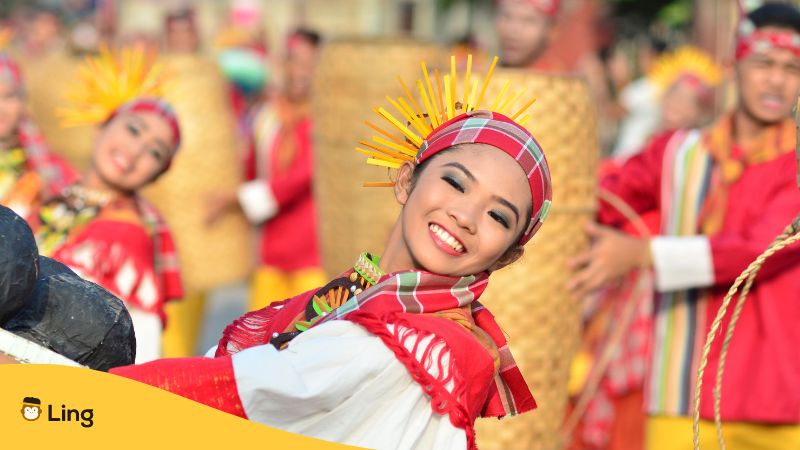
While the country is home to many people following many different faiths, culturally, the Philippines islands is a predominantly Roman Catholic. When the Spanish occupied the Philippines, they converted most of the local populace to the religion they believed in.
Over time, Filipinos started adopting the Catholic faith as their own. A key feature of how the country celebrates its faith is through its many, many regional fiestas (festivals). Many of these fiestas commemorate the patron saint of their barrio, and everyone – neighbors, friends, family, and strangers – are invited to each others’ homes for the customary handaan (a gathering for food.) As a result, no one goes home hungry!
In the Northern Luzon highlands, especially in the more mountainous areas, some tribes have held on to their ancient hunter-forager traditions. One world-famous tribe is the Kalinga people of the Cordillera.
Once known as brutal headhunters, the Kalinga is a reclusive warrior tribe that adorned its strongest members with intricate tattoos called batok. Today, the tribe offers the tattoo to its visitors, sharing a piece of their history with the wider world.
Nature In The Philippines
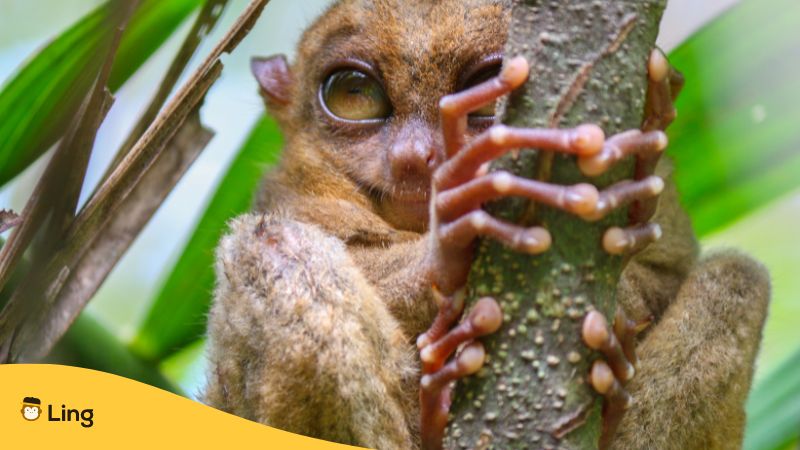
As many of you already know, the Philippines is a beautiful country. It has one of the most diverse archipelagic features on the Earth’s surface, with its principal regions boasting many natural wonders. The Philippines lies on a bed of natural beauty!
The islands are home to many diverse flora and fauna, beautiful principal rock formations, rain forests, coral reefs, and more. However, due to natural and social issues, such as illegal logging and water pollution from urban centers, much of this beauty is slowly being eroded.
Its longest mountain range, the Sierra Madre, spans 341 miles (540 km+) from the Cagayan province down to Quezon province. Over 200 species of mammals call the islands their home, including monkeys, pangolins, civet cats, and wild dogs.
Another thing that makes this unassuming group of islands unique is how it hosts many migratory birds. After tag-ulan (rainy season), flocks of migrant birds journey to the Philippines, going south for the winter. Its extensive river systems allow for plenty of fish and flowering plants for these visitors to enjoy!
Not everything in the Philippines is a tropical paradise, however. Other islands are unfortunately in the path of the typhoon belt. During the rainy season, these islands (particularly those on the country’s eastern coast) are subjected to a constant barrage of strong bagyo (typhoons). But that’s nothing in the face of Filipino resiliency!
Recap
Now that you have a basic sense of the country, it’s time to visit! Before that, let’s take a quick recap of what we learned today:
- The official name of the Philippines is Republika ng Pilipinas (Republic of the Philippines)
- Filipino is the national language, with English as a second language.
- It has over 7,600 islands.
- There are two seasons: the dry season and the rainy season.
- Filipinos are predominantly Catholic.
- The country’s people are mostly of Malay descent, with a mix of Spanish, Chinese, American, and more.
- It is home to many species of animals and beautiful land and seascapes.
- There’s a lot to love in this country!
The country has had a reputation for having some of the happiest people in the world. We promise that everyone in this country is more than happy to share that joy with you. After all, anyone who visits is immediately considered part of the pamilya (family!)
Learn Tagalog With The Ling App

Now that we hear you are opening new tabs to book your next flight to Manila, please give us a second: we know how your trip can go better!
Learn the basic words and phrases you’ll need during your trip with the Ling app. Created with the help of expert educators and native speakers, the Ling app can take your Tagalog knowledge from zero to hero.
Download the Ling App today for Android and iOS and get started on your Tagalog learning journey today.
